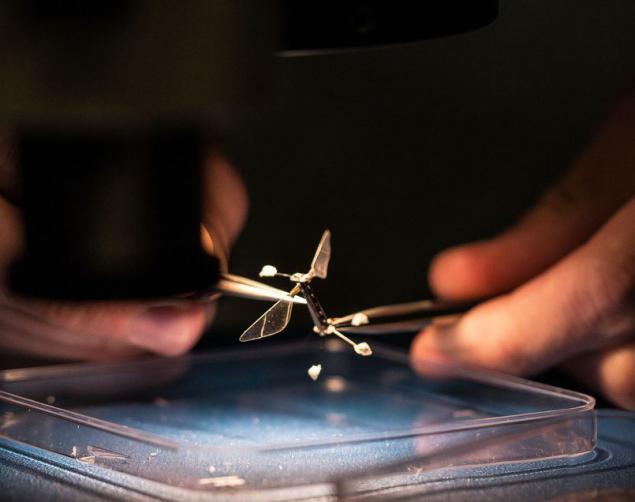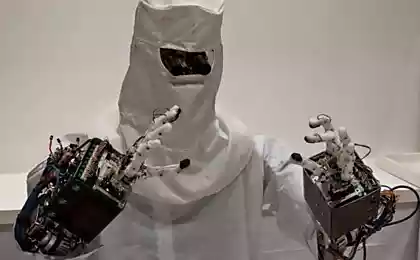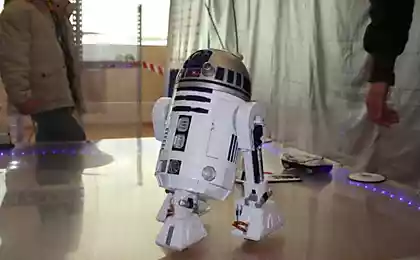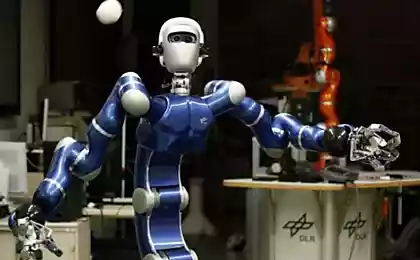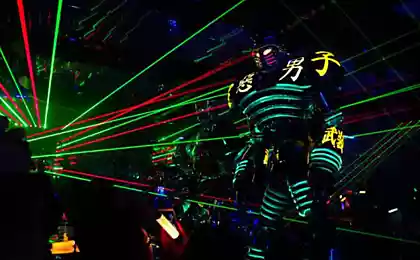2440
Robots in medicine

Today, research groups around the world trying to find the concept of using robots in medicine. Although correct, perhaps, to say "have hit upon." Judging by the number of development and interest of various research groups, it can be argued that the main direction was the establishment of medical micro-robots. This may also include robots and with the prefix "nano". And the first successes in this area have been made recently, only eight years ago.
In 2006 a group of researchers led by Silvana Martel first in the world held a successful experiment by running a tiny robot the size of a ball from a pen into the carotid artery of live pigs. At the same time the robot moves on all assigned "Waypoints". And over the past few years since mikrorobototehnika some progress forward.
One of the main goals for engineers today is to create medical robots that will be able to move not only on major arteries, but also in a relatively narrow blood vessels. This would allow for complex treatments without such traumatic surgery.
But this is not the only potential advantage of micro-robots. In the first place, they would be useful in the treatment of cancer, specifically delivering the drug directly to the malignancies. The value of such a possibility is difficult to overestimate: the chemotherapy drugs are given through a drip, dealing a severe blow to the body. In fact, it is a strong poison that affects multiple internal organs, and for the company, the tumor itself. This compares with a carpet bombing to destroy the small single target.
The task of creating such microrobots located at the junction of a number of scientific disciplines. For example, from the point of view of physics - how to make such a small object to move independently in a viscous liquid, which for him is the blood? From the point of view of engineering - how to provide the robot with energy and how to track the movement of the body of a tiny object? From the point of view of biology - the materials used for the manufacture of robots so that they do no harm to the human body? And ideally, the robots must be biodegradable, it was not necessary yet to solve the problem of their withdrawal from the body.
One example of how micro-robots can "contaminate" the patient's body is "bioraketa».

This embodiment is a microrobot titanium core, surrounded by a sheath of aluminum. Robot 20 microns diameter. The aluminum reacts with water in the course of which the surface of the shell formed hydrogen bubbles which push the whole construction. In water, this "bioraketa" floats in a second distance equal to its diameter 150. This can be compared to a man two meters tall, which is a second swims 300 meters, 12 swimming pools. Operates a chemical engine about 5 minutes by the addition of gallium, reduces the intensity of the formation of the oxide film. That is, the maximum cruising range of about 900 mm in water. The direction of movement of the robot is set by an external magnetic field, and you can use it to spot drug delivery. But only after drying out "charge", in a patient would be a scattering microspheres with an aluminum shell, which is not beneficial to the human body, as opposed to biologically neutral titanium.
Micro-robots have to be so small that simply scaled to the desired size traditional technologies will not work. No standard parts suitable size also did not produce. And even if it were made, they simply would not have come to such specific needs. And because the researchers, as it has many times in the history of inventions, seeking inspiration from nature. For example, the same bacteria. At the micro, and the more the nanoscale are completely different physical laws. In particular, water is a very viscous liquid. Therefore it is necessary to use other engineering solutions for the movement of micro-robots. Bacteria often solve this problem with the help of cilia.
Earlier this year, a group of researchers from the University of Toronto has created a prototype microrobot length of 1 mm from the external magnetic field and is equipped with two grippers. The developers managed to use it to build a bridge. Also this robot can be used not only for drug delivery, but also for the mechanical repair of tissue in the circulatory system and organs.
